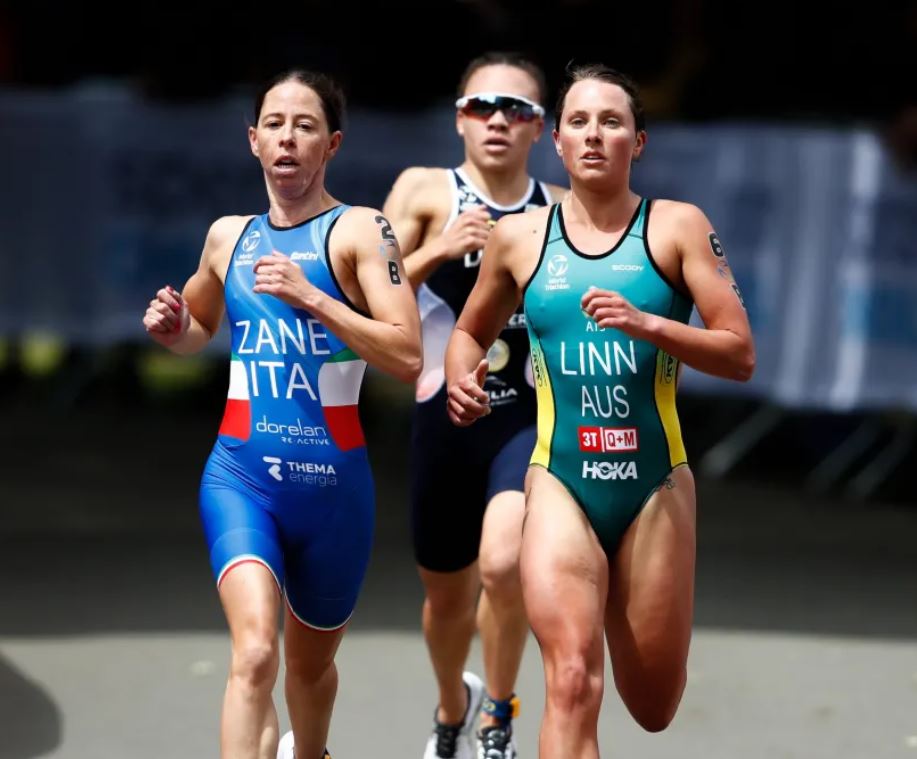![]() Free Shipping
Free Shipping ![]() Buy Now, Pay Later
Buy Now, Pay Later ![]() Eligible
Eligible
Could Red Light Therapy Be the Secret to Better Endurance for Triathlon Competitors?

Triathlon competitors are always on the lookout for the next breakthrough to boost performance, speed up recovery, and gain an edge over the competition. From advanced training protocols to cutting-edge nutrition strategies, athletes leave no stone unturned in their quest for peak performance. But what if the secret to better endurance wasn’t just about training harder—but about recovering smarter?
Enter red light therapy (RLT), a non-invasive treatment gaining traction among elite athletes for its potential to enhance endurance, accelerate recovery, and even improve muscle performance. Could this be the missing piece in a triathlete’s training regimen? Let’s dive into the science, the benefits, and whether RLT truly lives up to the hype.
What Is Red Light Therapy?
Red light therapy, also known as photobiomodulation (PBM), involves exposing the body to low-wavelength red and near-infrared light. Unlike harmful UV rays, these wavelengths penetrate the skin without causing damage, stimulating cellular energy production (ATP) in the mitochondria—the powerhouse of our cells.
Originally developed by NASA for plant growth experiments in space, researchers soon discovered its potential for human tissue repair and performance enhancement. Today, RLT is used in medical settings, skincare, and—increasingly—sports medicine.
How Could Red Light Therapy Benefit Triathletes?
Triathlon training is grueling, demanding peak performance across swimming, cycling, and running. The sport pushes the body to its limits, often leading to muscle fatigue, inflammation, and prolonged recovery times. Here’s how RLT may help:
1. Enhanced Endurance & Reduced Fatigue
One of the most exciting potential benefits of RLT is its ability to improve mitochondrial function, leading to better energy utilization. A 2013 study published in Laser Therapy found that athletes who underwent red light therapy before exercise experienced increased time to exhaustion and reduced muscle fatigue.
For triathletes, this could translate to:
- Longer training sessions with less perceived effort
- Delayed onset of fatigue during races
- Improved oxygen utilization, crucial for endurance sports
2. Faster Recovery & Reduced Inflammation
Triathletes know that recovery is just as important as training. Intense workouts cause micro-tears in muscle fibers, leading to soreness and inflammation. RLT has been shown to:
- Reduce muscle damage by lowering inflammatory markers (like IL-6 and CRP)
- Speed up muscle repair by stimulating collagen synthesis
- Decrease DOMS (delayed onset muscle soreness)
A 2016 study in the Journal of Athletic Training found that RLT significantly reduced muscle soreness and strength loss post-exercise, meaning triathletes could bounce back faster between sessions.
3. Improved Circulation & Oxygen Delivery
Endurance athletes rely on efficient oxygen delivery to muscles. Red and near-infrared light have been shown to increase nitric oxide production, which enhances blood flow and vasodilation. Better circulation means:
- More oxygen to working muscles
- Faster removal of metabolic waste (like lactate)
- Improved endurance capacity
4. Joint & Tendon Health
Triathletes often battle overuse injuries—tendonitis, joint pain, and ligament strain. RLT has demonstrated promise in:
- Reducing joint pain (studies show benefits for osteoarthritis)
- Accelerating tendon healing (key for runners and cyclists)
- Preventing chronic injuries by promoting tissue repair
VELLGUS Elite V2
THE #1 RATED RED LIGHT DEVICE
VELLGUS pro V2
THE #1 RATED FULL BODY RED LIGHT DEVICE
How Are Athletes Using Red Light Therapy?
Elite athletes and teams are already incorporating RLT into their routines. Some common methods include:
- Pre-workout application (to boost performance)
- Post-workout recovery (to reduce soreness)
- Targeted treatment for injuries (knees, shoulders, Achilles tendons)
Devices range from handheld units for spot treatment to full-body panels for systemic benefits. Some athletes even use wearable RLT devices (like knee wraps or waist belts) for on-the-go recovery.
The Science: Is There Enough Evidence?
While the research is promising, it’s important to note that studies on RLT for endurance athletes are still evolving. Some key findings:
✅ A 2018 meta-analysis in Sports Medicine concluded that PBM can enhance performance and recovery.
✅ A 2020 study in Frontiers in Physiology found RLT improved cycling performance in trained athletes.
❌ Some studies show mixed results, possibly due to variations in light dosage and timing.
The consensus? RLT appears beneficial, but optimal protocols (wavelength, duration, timing) need further refinement.
Should Triathletes Try Red Light Therapy?
If you’re looking for a legal, non-invasive, and drug-free way to potentially boost endurance and recovery, RLT is worth exploring. Here’s how to get started:
- Choose the Right Device: Look for FDA-cleared RLT devices with wavelengths between 630-850nm.
- Timing Matters:
- Pre-workout (10-20 min before) for performance
- Post-workout (within 1 hour) for recovery
- Consistency is Key: Most benefits are seen with regular use (3-5x per week).
Final Verdict: A Promising Tool for Endurance Athletes
While red light therapy isn’t a magic bullet, the evidence suggests it can be a valuable addition to a triathlete’s recovery and performance toolkit. By enhancing mitochondrial function, reducing inflammation, and speeding up repair, RLT may help athletes train harder, recover faster, and push their limits further.
If you’re a triathlete searching for an edge, red light therapy could be the secret weapon you’ve been missing.
Have you tried RLT? Share your experiences in the comments! 🚴♂️🏊♂️🏃♂️








